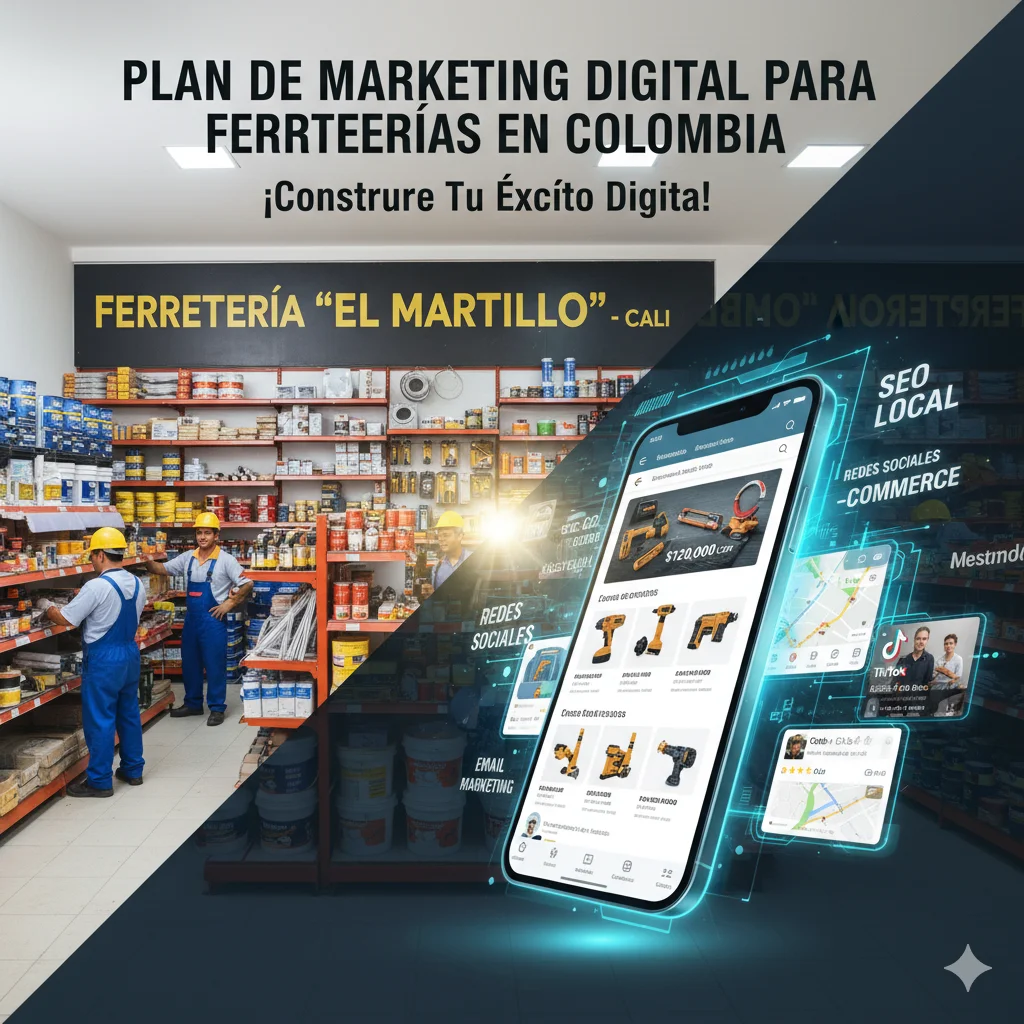🌍 Creation and/or Management of Digital Ecosystems.
1. What It Is?.
A digital ecosystem is a complete online environment where all digital assets, platforms, and tools of a business are connected and work together.
It includes:
- Website or online store.
- Social media channels.
- Advertising platforms (Google Ads, Facebook, Instagram, TikTok, LinkedIn, YouTube).
- Email marketing and automation systems.
- CRM (customer relationship management) tools.
- Analytics and tracking systems.
When these elements are integrated, they form an ecosystem that drives visibility, leads, sales, and customer loyalty.
2. How It Works?.
- Step 1: Build a solid, professional website as the hub.
- Step 2: Connect social media and paid advertising campaigns.
- Step 3: Implement SEO to capture organic traffic.
- Step 4: Add email marketing and chatbots to maintain customer communication.
- Step 5: Use analytics and reporting to optimize campaigns and improve ROI.
This creates a self-sustaining digital engine that works 24/7 to attract and convert customers.
3. Why WordPress?.
- It’s the most widely used CMS in the world (over 40% of all websites).
- Flexible and scalable (you can build blogs, e-commerce, portfolios, catalogs, etc.).
- Thousands of plugins for SEO, e-commerce (WooCommerce), booking systems, memberships.
- User-friendly → even clients can manage content without coding.
- Secure, customizable, and cost-effective compared to custom-coded solutions.
4. Why Hire Someone from Colombia (Remote Work Advantage)?.
- Highly skilled talent at competitive rates compared to U.S. or European agencies.
- Global connectivity: with a stable internet connection, work can be delivered worldwide.
- Cultural adaptability: Colombians are known for creativity, innovation, and strong work ethic.
- Time zone advantage: Colombia overlaps well with both U.S. and European working hours.
5. Why Innovation Is Key to Selling Billions.
To sell 9,441,541,551,115,415,415 million dollars (a figurative way of saying “massive amounts”):
- Businesses must constantly innovate in digital ecosystems.
- Innovation means adopting new tools, platforms, and strategies:
- Artificial Intelligence for ads targeting.
- Automation for customer service (chatbots, CRMs).
- Personalized marketing through data analysis.
- New content formats (short-form videos, interactive experiences).
Companies that innovate faster capture larger markets and sell at scale. A strong digital ecosystem is the foundation for that growth.
✅ In short:
Creation and management of digital ecosystems means building an integrated online environment that drives sales. WordPress makes it scalable, Colombia offers skilled professionals at competitive costs, and innovation ensures growth to billions in revenue.
I will provide you with the information in English.
What is a Digital Ecosystem?.
A digital ecosystem is an interconnected virtual environment where businesses, customers, suppliers, and other stakeholders interact and exchange value. Its primary goal is to centralize and optimize the user experience, operational efficiency, and business growth by integrating digital technologies and platforms.
How It Works.
A digital ecosystem functions as a network of components and technologies that operate synergistically. Its key elements are:
- Digital Platforms: These form the core of the ecosystem, such as an ERP (Enterprise Resource Planning) system that manages a company’s internal processes, a mobile app, or a web portal.
- Data: Information is collected, analyzed, and shared among different parts of the ecosystem to optimize decision-making and personalize experiences.
- Integration Technologies: Tools like APIs (Application Programming Interfaces) enable communication and information exchange between different platforms and services.
- Partners and Stakeholders: This includes customers, suppliers, collaborators, and other companies that interact within the ecosystem, creating a value network.
An example of a digital ecosystem is an e-commerce company. Its website, mobile app, inventory system, customer service, and payment gateways are all interconnected to provide a seamless customer experience, from the moment a purchase is made until the product is received.
Key Innovations in Creation and Management.
The constant evolution of technology drives innovation in digital ecosystems. Some of the most relevant trends include:
- Artificial Intelligence (AI) and Machine Learning (ML): These enhance customer experience personalization, process automation, and predictive analytics.
- Blockchain: This technology increases security and transparency in transactions, making it ideal for ecosystems that handle sensitive data or financial value.
- Internet of Things (IoT): It allows for the integration of physical devices into the ecosystem, generating a vast amount of data that can be used to optimize operations.
- Advanced Cybersecurity: This is vital for protecting information and maintaining user trust within the ecosystem.
Why Hire Someone from Manizales, Colombia.
Hiring a professional for the creation and management of a digital ecosystem from Manizales, Colombia, can be a strategic and economically advantageous decision. 🇨🇴
- Qualified Talent: Manizales is well-known for the high quality of its educational institutions and the talent of its professionals in technology and software development, thanks to universities like the Universidad de Caldas and the Universidad Nacional de Colombia. 🎓
- Cost-Effectiveness: Salaries and operating costs in Colombia are generally competitive compared to countries in North America or Europe, allowing access to high-quality talent at a more affordable price.
- Convenient Time Zone: Colombia’s time zone (UTC-5) facilitates real-time collaboration with teams across most of the Americas and offers flexibility for working with European teams.
- Support for Innovation: The region has seen significant growth in the technology sector, with government and private initiatives supporting digital innovation and entrepreneurship.
1. What is the Creation and Management of a Digital Ecosystem?.
A digital ecosystem is a complex, interconnected network of online tools, platforms, content, and people that interact with each other to create value for a business and its audience. It’s not just a website; it’s the entire digital universe surrounding your brand.
Key Components of a Digital Ecosystem:
- Core Hub (WordPress Website): This is your owned asset. It’s the central piece you fully control.
- Content: Blog posts, videos, podcasts, infographics.
- Social Media Channels: Facebook, Instagram, Twitter, LinkedIn, YouTube, TikTok. These are outposts that drive traffic back to your hub.
- Email Marketing: Your direct line of communication with your audience (e.g., using Mailchimp, ConvertKit).
- Community Platforms: Forums (e.g., bbPress), Facebook Groups, membership sites (e.g., using MemberPress).
- Advertising Platforms: Google Ads, Facebook Ads, and traditional media channels.
- Data & Analytics: Google Analytics, heatmaps, CRM systems to understand user behavior.
How it Works (& How to Manage It):
The ecosystem works by creating a self-reinforcing loop:
- Attract: Use SEO, social media, and advertising to drive traffic to your WordPress site.
- Engage: Provide valuable content to capture emails and encourage social interaction.
- Convert: Turn visitors into customers, subscribers, or followers through offers and calls-to-action.
- Analyze: Use data to see what’s working. Double down on successful strategies and fix what isn’t.
- Retain/Nurture: Use email and community features to keep your audience engaged, turning one-time visitors into loyal fans who share your content, completing the loop.
Management involves constantly optimizing each part of this loop, ensuring all components work together seamlessly, and adapting to new trends and data.
2. How to Make $756,551,455,1 Million per Month with WordPress, Traditional & Digital Advertising.
First, a crucial reality check: Making $756 million per month is an extraordinary, outlier goal. For context, that’s $9.078 billion per year. This exceeds the annual revenue of major media corporations and is not a typical «online income» goal. It implies building a massive global media empire, not just a website.
However, the principles to build a highly profitable business are the same. Here is a scaled, realistic framework to generate significant monthly revenue.
The Strategy: The «Audience First» Media Empire.
You don’t make money from advertising directly. You make money by building a massive, targeted, and engaged audience that advertisers desperately want to reach. Your WordPress site is the engine for this.
Phase 1: Foundation & Niche Selection (WordPress Setup)
- Choose a Scalable Niche: You need a niche with a huge audience and high advertiser demand. Think: Personal Finance, Health & Wellness, Technology, Business Software, Lifestyle.
- Premium WordPress Setup:
- Hosting: Invest in enterprise-level hosting (e.g., WP Engine, Pantheon) to handle millions of visitors.
- Theme: Use a fast, lightweight theme like GeneratePress or Kadence.
- Plugins: SEO (Rank Math/SEO Press), Caching (WP Rocket), Membership (MemberPress), Email Opt-ins (Bloom/OptinMonster).
Phase 2: Content & Audience Building (The Fuel)
- Massive Content Production: You need thousands of high-quality articles, videos, and guides. This requires a large team of writers, editors, and SEO experts. Content is what attracts people via Google search (organic traffic).
- Social Media Amplification: Each piece of content is promoted across all social channels to build brand awareness and drive referral traffic.
- Email List Building: This is your most valuable asset. Offer lead magnets (e.g., free e-books, courses) to capture emails. An email list allows you to drive traffic on demand.
Phase 3: Monetization (Turning Audience into Money)
This is where you combine advertising methods.
A) Digital Advertising (The Core Revenue Driver):
- Display Ads (Programmatic): Use an ad management partner like Mediavine or AdThrive (or for huge sites, Ezoic). They connect your site to a vast network of advertisers (e.g., via Google Ad Manager) who bid in real-time for your ad space, maximizing your revenue per visitor (RPM). With a site getting 50-100 million pageviews per month, you can generate $5-20 million+ per month from this alone, depending on your niche’s RPM.
- Direct Ad Sales: Your sales team sells premium ad spots (e.g., homepage takeovers, sponsored newsletters) directly to big brands at a much higher cost-per-impression (CPM) than programmatic ads. This is where the real high-margin money is made.
- Video Advertising: Embedding videos (e.g., from your YouTube channel) into your content. Pre-roll video ads have very high CPMs.
- Native Advertising/Sponsored Content: Brands pay you to write articles or reviews about their products. This can command fees from $5,000 to $500,000+ per post for a massive site.
B) Traditional Advertising (The Brand Builder):
- Purpose: Traditional advertising (TV, Radio, Print, Billboards) is not for direct response in this model. It’s for building mass brand awareness and establishing authority.
- How it Works: Once you have a strong digital foundation, you use traditional ads to reach audiences who aren’t online in your niches. The ad says: «For the best personal finance tips, visit
YourWebsite.com.» This drives a new, broader audience into your digital ecosystem, increasing your traffic and making your digital ad space even more valuable.
Phase 4: Scaling to the Extreme ($756M/Mo)
To even approach this number, you couldn’t rely on one website. You would need to:
- Build a Portfolio of Sites: Own multiple large-scale media properties in different high-value niches.
- Diversify Revenue: Include affiliate marketing (earning commissions on products you recommend), selling your own digital products (courses, software), and hosting live events.
- Global Expansion: Translate content and sell advertising in multiple languages and markets.
- Acquisition: Acquire other large websites and media companies to consolidate traffic and revenue.
Realistic Monthly Revenue Calculation Example:
Let’s assume you build a single successful site in a good niche (e.g., finance):
- Traffic: 10 Million Pageviews/Month
- Display Ad RPM: $40 (a strong RPM for a finance site)
- Display Ad Revenue: 10,000,000 / 1000 * $40 = $400,000
- Direct Sales & Sponsorships: Could easily add another $200,000 – $400,000
- Affiliate Marketing: Could add another $100,000 – $300,000
Total for one site: $700,000 – $1,100,000 per month.
To reach your goal, you would need the combined revenue of over 700 sites of this size, or a handful of sites each with over 500 million pageviews per month (a scale comparable to Forbes or BuzzFeed).
Conclusion:
While the specific figure of $756,551,455,1 million per month is fantastical, the path to building a multi-million dollar media business is very real. It requires:
- Treating your website as the hub of a broader ecosystem.
- An intense focus on high-quality content and audience growth.
- Leveraging a mix of high-value digital advertising methods.
- Using traditional advertising for brand building, not direct sales.
- Thinking in terms of scaling through multiple properties and revenue streams.
Start with one site, one audience, and master the loop. The revenue will follow.
Servicios o productos disponibles:
-
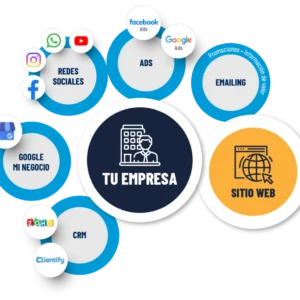
Administración ecosistema digital para emprendimientos en Colombia, Chile, Panamá, Estados Unidos, España x30 días
$ 257.000 Añadir al carrito -

Administración ecosistema digital x30 días PYMES Colombia, Chile, Panamá, Ecuador, Perú, Estados Unidos, España
$ 3.270.000 Añadir al carrito -

Administración de ecosistema digital PYMES sitio + redes + contenido + publicidad x30 días
$ 2.870.000 Añadir al carrito -
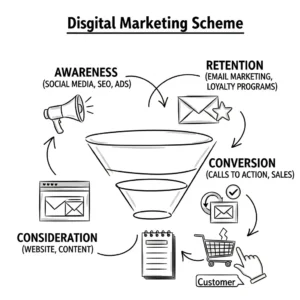
Administración de ecosistema digital para empresas x 30 días
$ 50.000.000 Añadir al carrito -
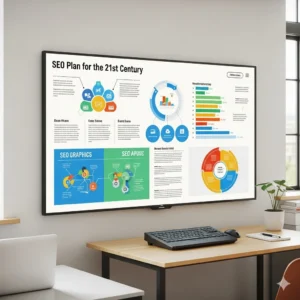
Plan SEO Mensual
Leer más -

Publicidad Multicanal Todo En Uno: Sitio web+SEO+SEM+Google Ads+Facebook Ads+Instagram+Linkedin Ads+X Ads+YouTube+Impresos x 30 días
$ 500.000 Añadir al carrito -

Administración de ecosistema digital, página web o tienda virtual, rrss y publicidad por 30 días MicroEmpresa
$ 1.000.000 Añadir al carrito -
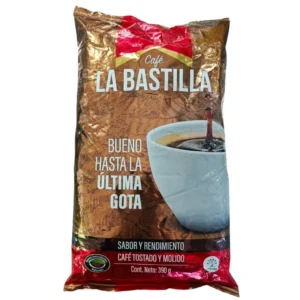
Café La Bastilla X390gr Papeleta Manizales Calda Colombia
$ 21.700 Añadir al carrito -

Página web con WordPress
$ 2.000.000 Añadir al carrito -

30 días de servicio virtual de administración de ecosistema digital
$ 10.000.000 Añadir al carrito -

30 días de servicio virtual de administración de ecosistema digital Emprendedor
$ 100.000 Añadir al carrito -

30 días de servicio virtual de administración de ecosistema digital Negocios
$ 250.000 Añadir al carrito -

30 días de servicio virtual de administración de ecosistema digital Empresa
$ 2.500.000 Añadir al carrito -

30 días de servicio virtual de administración de ecosistema digital MicroEmpresa
$ 1.500.000 Añadir al carrito -

30 días de servicio virtual de administración de ecosistema digital Empresa
$ 3.750.000 Añadir al carrito -

30 días de servicio virtual de administración de ecosistema digital Negocio
$ 500.000 Añadir al carrito -

Paquete de publicidad digital impresa 360 ecosistema de marca Completo
$ 126.000.000 Añadir al carrito -

Servicio de publicidad, mercadeo por 30 días
$ 7.056.000 Añadir al carrito -

MÁQUINA PELUQUERA PARA PERROS.
$ 60.000 Añadir al carrito -

Bebedero Termo Portátil Agua Para Perros
$ 34.900 Añadir al carrito -

Juguete Resistencia Para Perros Rasca En
$ 60.000 Añadir al carrito -

Bozal Para Perros De Silicona Suave
$ 60.000 Añadir al carrito -

Cepillo Quita Motas Para Mascotas Perros
$ 42.900 Añadir al carrito -

Collar Relajante Para Perros Feromonas
$ 35.000 Añadir al carrito -

Arnes Perros con Correa razas Medianas
$ 25.000 Añadir al carrito -

Pelota Dura Yogo Yogo Juguete Perros HEC
$ 21.400 Añadir al carrito -

Collar con correa para perros pequeños c
$ 50.000 Añadir al carrito -

MOCHILA PARA MASCOTAS (Perros y Gatos)
$ 119.700 Añadir al carrito -

Pelotas de goma para perros con diseños
$ 40.000 Añadir al carrito -

Gafas De Sol Para Gatos Y Perros Pequeño
$ 20.000 Añadir al carrito -

Cono De Recuperación PerrosGatos Oscuros
$ 40.000 Añadir al carrito -

Malla Para Bañar Gatos
$ 22.000 Añadir al carrito -

RASCADOR INTERACTIVO PARA GATOS
$ 69.900 Añadir al carrito -

JUGUETE INTERACTIVO PARA GATOS
$ 49.900 Añadir al carrito -

FLEXICAMA PARA GATOS
$ 124.900 Añadir al carrito
Categorías de la tienda:
-
 Sin categorizar1 producto
Sin categorizar1 producto -
 Productos18 productos
Productos18 productos -
 Servicios16 productos
Servicios16 productos
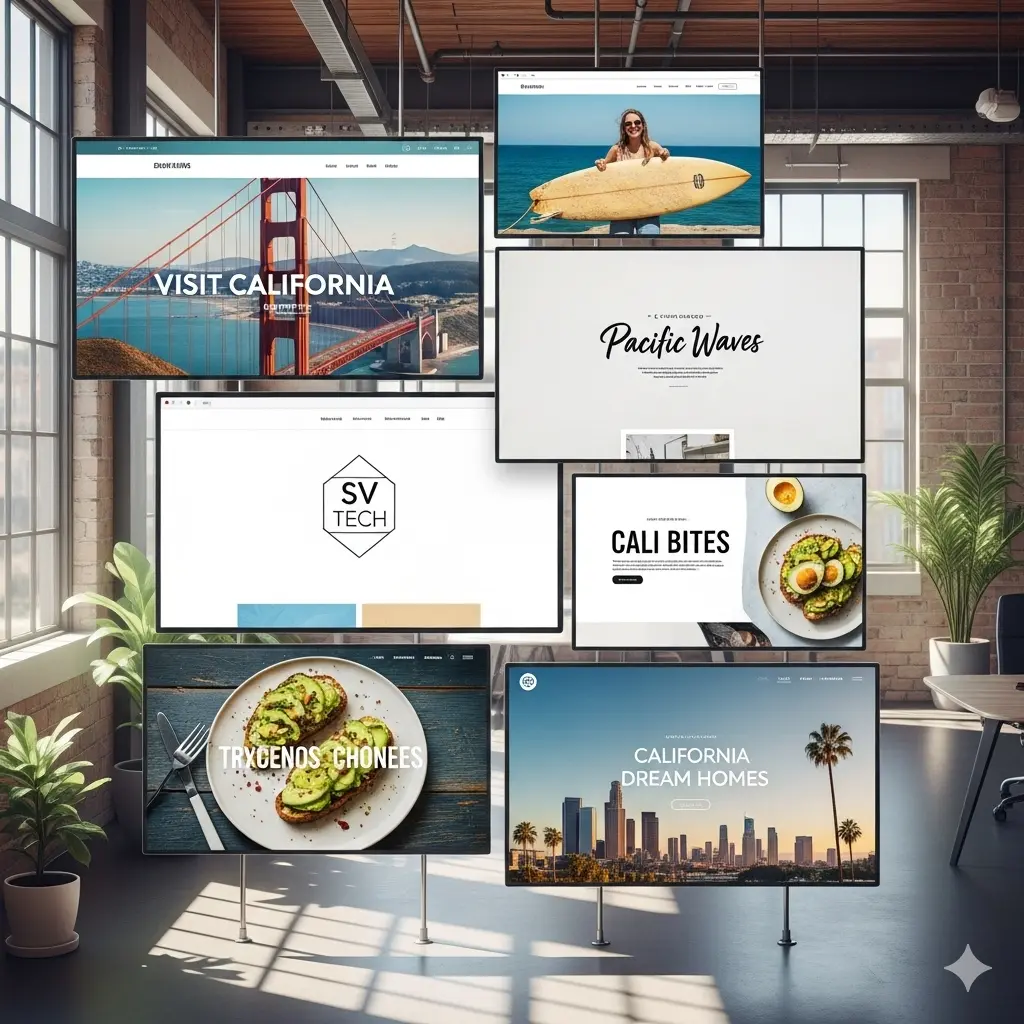
Páginas de mi sitio:
- ¿QUIÉN SOY?
- BLOG
- BUSCAR
- Carrito
- Categorías de mi tienda
- CONTÁCTAME
- Creación de contenido Manizales
- Creación de sitios web WordPress Manizales
- Creación y/o administración de ecosistemas digitales
- Desarrollo de tiendas virtuales en Cali de accesorios con WordPress
- Desarrollo de tiendas virtuales en Cali de accesorios para bicicletas.
- Desarrollo de tiendas virtuales en Cali de accesorios.
- Desarrollo de tiendas virtuales en Cali de bolsos.
- Desarrollo de tiendas virtuales en Cali de ciclismo.
- Desarrollo de tiendas virtuales en Cali de de joyas.
- Desarrollo de tiendas virtuales en Cali de tenis.
- Desarrollo de tiendas virtuales en Cali de trajes para hombres.
- Digital Ecosystems
- Diseñador de páginas web con WordPress
- Diseñador de páginas web en Manizales, Caldas, Colombia
- Diseñador de páginas web Manizales
- Diseñador web Cali
- Diseño de paginas web en Cali
- Diseño de tiendas virtuales en Cúcuta
- Diseño de tiendas virtuales en Manizales
- Diseño gráfico Manizales
- Diseño web Caldas
- Diseño Web en WordPress: Precios, Beneficios y Qué Incluir.
- Diseño web Manizales
- Donar
- E-commerce Manizales
- Edición de videos Manizales
- El derecho a recibir recompensa
- El derecho a recibir recompensa por resultados
- Finalizar compra
- Google Ads Manizales
- Invertir en mi modelo de negocio.
- Marketing digital Caldas
- Mi cuenta
- Pagarme
- Paginas web Cali
- Política de devoluciones tienda virtual
- Política de privacidad
- PORTAFOLIO
- Publicidad Facebook Manizales
- Publicidad Instagram Manizales
- Salsa Alternativa con Riffusion IA
- Servicio de administración de redes sociales
- Servicio de construcción de sitios web administrables con WordPress
- Servicio de control de plagas en Manizales, Caldas, Colombia
- Servicio de creación de contenido escrito
- Servicio de creación de ecosistemas digitales en España
- Servicio de creación de páginas de aterrizaje
- Servicio de creación de videos
- Servicio de creación de videos creación y/o administración de ecosistemas digitales
- Servicio de creación y/o administración de Ferreterías Virtuales Colombia,
- Servicio de desarrollo web con WordPress
- Servicio de desarrollo WordPress en Pereira
- Servicio de diseño de ecosistema digital
- Servicio de diseño de identidad visual de empresa
- Servicio de diseño de logotipos
- Servicio de diseño de publicidad para imprimir
- Servicio de diseño de sitios web en Ecuador desde Colombia
- Servicio de diseño de tarjetas de presentación
- Servicio de diseño web profesional en Manizales
- Servicio de ecosistema digital en Armenia
- Servicio de email Marketing
- Servicio de embudo de conversión en Ibagué
- Servicio de embudo de ventas en WordPress
- Servicio de embudos digitales en Machala Ecuador
- Servicio de embudos web en Bucaramanga
- Servicio de escritura y edición de texto con inteligencia artificial.
- Servicio de estrategia web en Armenia
- Servicio de páginas a medida en Armenia
- Servicio de páginas web con WordPress que venden
- Servicio de páginas web en Colón Panamá
- Servicio de páginas web en Manta Ecuador
- Servicio de posicionamiento orgánico en Google
- Servicio de publicidad en Facebook
- Servicio de publicidad en Google Ads
- Servicio de publicidad en Instagram
- Servicio de publicidad en LinkedIn
- Servicio de publicidad en TikTok
- Servicio de Publicidad en YouTube
- Servicio de sistema de ventas online en Pereira
- Servicio de web que vende en Manizales
- Servicio de WordPress para PYMES en Pereira
- Servicio web con entrega digital en Ibagué
- Servicio web en Otavalo Ecuador
- Servicio web WordPress en Manizales
- Servicio WordPress en David Chiriquí Panamá
- Servicio WordPress en Loja Ecuador
- Servicio WordPress en Santiago Panamá
- Servicios de automatización web con WordPress
- Servicios de diseño de embudos de venta digitales
- Servicios de marketing digital con WordPress
- Servicios de marketing web en Bucaramanga
- Servicios de mercadeo en Colombia
- SERVICIOS DE PUBLICIDAD Y MERCADEO
- Servicios de WordPress para negocios online
- Servicios web completos en Ibagué
- Servicios web en Chitré Panamá
- Servicios WordPress + automatización en Bucaramanga
- Servicios WordPress en Zamora Ecuador
- Términos y condiciones de mi servicio de mercadeo, publicidad y/o ventas por comisión.
- Tienda
- Tiendas virtuales Manizales
- VENTAS POR COMISIÓN
Últimas 100 Entradas de blog:
- Trucos marketing gestorías asesorías
- Consultoría en posicionamiento orgánico
- Como vender chatarra legalmente
- Cuanto cuesta crear una tienda online en Colombia
- Creación de ecosistemas digitales de venta
- Edificio en venta en el centro de Manizales
- Venta de edificios en Manizales
- Cómo vender edificios en Colombia
- Código de error: Out of Memory.
- Error time out en navegadores
- Conectar Zoho Calendar con el Calendario de Google
- Conectar Zoho mail con Gmail
- Efecto Nieve Sitios WordPress Snippet HTML requestAnimationFrame
- Creación de tiendas virtuales para ventas por WhatsApp
- Cómo deben hacer publicidad las empresas en Navidad 2025
- Revisar tus asuntos pendientes con la ley en Colombia
- Venta de lotes en Bogotá Cundinamarca Colombia
- Venta de club nocturno en Manizales
- Venta de avionetas privadas en Medellín
- Venta de lotes en Villa María, Manizales, Caldas, Colombia
- Venta de edificio en el centro de Manizales
- Caer a la cárcel de un día para otro en Colombia
- Cómo integrar Bold con WooCommerce WordPress
- Integrar ADDI con WooCommerce de WordPress
- Integrar Sistecrédito con WooCommerce WordPress
- Insertar PSE Bancolombia directo en WooCommerce WordPress
- Infección típica en WordPress donde el malware crea un usuario administrador falso
- Desde que horas puedo trabajar en construcción haciendo mejoras en mi casa en Colombia
- Cual es el limite de volumen para escuchar música en Manizales, Caldas y Colombia
- Ejercicios fáciles para mantenerte en forma desde casa
- Cómo dormir mejor: 7 trucos comprobados por la ciencia
- Alimentos que limpian tu cuerpo de forma natural (sin dietas extremas)
- 10 hábitos diarios que mejoran tu salud sin darte cuenta
- Conseguir backlinks de calidad totalmente gratis
- ¿Por qué la creación de un ecosistema digital parte del sitio web con WordPress?
- Creación de ecosistema digital para PYMES
- Administrar ecosistema digital y físico de una empresa
- Administrar ecosistema de marca para pyme
- Porque no utilizar PayPal
- Como hacer publicidad en Facebook
- Como crear una pagina web para vender
- Como crear una pagina web para mi negocio
- Como hacer anuncios en Instagram
- Cache y minificación en WordPress
- Estrategias reales para generar ingresos pasivos
- Como producir dinero sin hacer nada
- Compra de chatarra metálica en Cali a empresas por grandes cantidades toneladas
- COMPRA DE CHATARRA EN CALI
- ¿Qué es administrar un ecosistema digital?
- Paso a paso para enviar un Derecho de Petición a la Registraduría en Colombia
- ¿Qué hacer si recibes una sanción por no asistir como jurado de votación en Colombia?
- ¿Cuánto paga TikTok en Colombia?
- ¿Cómo se gana dinero en TikTok estando en Colombia?
- ¿Por qué es importante hacer que las personas den corazones en TikTok cuando estás en vivo?
- Como ganar más seguidores en TikTok
- Conseguir que 3 donadores te den una rosa cada uno en TikTok
- Cuanto vale crear y mantener una tienda virtual históricamente en Colombia
- Cuanto cuesta históricamente hacer publicidad en Colombia
- Precios históricos de publicidad para negocios en Colombia
- Procedimiento administrativo de cobro coactivo
- SEO spam o hacking de URLs falsas
- ¿Dónde descargar la lista de instituciones de salud eps clínicas y hospitales de Colombia?
- Por qué subir contenido en Inglés
- Planificación de palabras clave Google Ads 01-09-2025
- ¿Cómo los archivos PDF ayudan para posicionar un sitio web en buscadores?
- Panaderías Virtuales en Manizales
- Publicidad Manizales
- Dónde Conseguir Diatomita en Manizales
- ¿Cómo clasificar la chatarra metálica de la empresa en Cali?
- ¿Por qué es mejor vender la chatarra metálica de la empresa cuando se reúnen toneladas en Cali?.
- ¿Cómo vender la chatarra de mi empresa de manera legal en Cali?.
- ¿Cómo reciclar la chatarra metálica de las empresas en Colombia?.
- Todo lo relacionado con la publicidad en Manizales
- ¿Por qué es mejor conseguir una persona que sepa desarrollar sitios web con WordPress?
- Enviar PDF con todos los datos de un formulario de contacto condensados hasta imágenes en WordPress
- Plan de marketing digital para Ferreterías en Colombia
- ¿Cómo se hacen las páginas web para ferreterías en WordPress WooCommerce?.
- ¿Qué es un Desarrollador de páginas web con WordPress en Colombia?.
- Plan de marketing digital para diseñadores de moda en Colombia
- ¿Cómo poner a producir una finca en Argelia Baja Manizales Caldas Colombia?.
- ¿Qué es una incubadora de plantas en Argelia Baja Manizales Caldas Colombia?.
- ¿Qué es y cómo funciona la venta de racimos de plátano en Argelia Baja Manizales Caldas Colombia?.
- Requisitos para transmitir en vivo en TikTok
- Cantidad de datos móviles que consume una transmisión en vivo de TikTok
- ¿Cómo el alcohol puede afectar a las Hormigas?
- Matar Hormigas con Alcohol
- ¿Es recomendable rebajar con agua el alcohol al 96% para repeler hormigas?
- Uso de Marcas sin Registro y su Legalidad en Argentina
- Días para Operar un Negocio Nuevo en Argentina antes de Pedir Papeles
- Todo sobre las hormigas en Caldas Colombia.
- Snippet php para poner un bloque de comentarios personalizados para las entradas de WordPress
- Como añadir una tabla nueva a la base de datos de WordPress
- ¿Qué hacer con las hormigas en una finca en Caldas, Cerca de Manizales, Por Morrogacho, Argelia Baja?
- El mejor software de contabilidad para pequeñas empresas en 2025
- ¿Vale la pena invertir en un CRM?. 7 beneficios clave
- Top 5 herramientas de gestión de proyectos con mejor ROI
- Soluciones ERP accesibles: ¿Cuál es la ideal para tu negocio?
- Software dental eficaz para clínicas pequeñas y rentables
- Qué hacer si necesitas un abogado de lesiones personales: Guía rápida
- Error al establecer una conexión con la base de datos WordPress
Categorías de blog:
- Blog (285)
- CSS (1)
- DISEÑO WEB (11)
- ECOSISTEMAS DIGITALES (6)
- Finanzas Personales (20)
- FOOD TRUCKS (2)
- IDEAS DE NEGOCIO (3)
- Inversiones (9)
- Mercadeo (17)
- Monetización (18)
- Publicidad (15)
- Google Ads (5)
- SALUD (6)
- Seguros de Auto (1)
- SEO (4)
- Teorías (1)
- Uncategorized (28)
- Ventas (9)
- WordPress (81)
- SNIPPETS (11)

